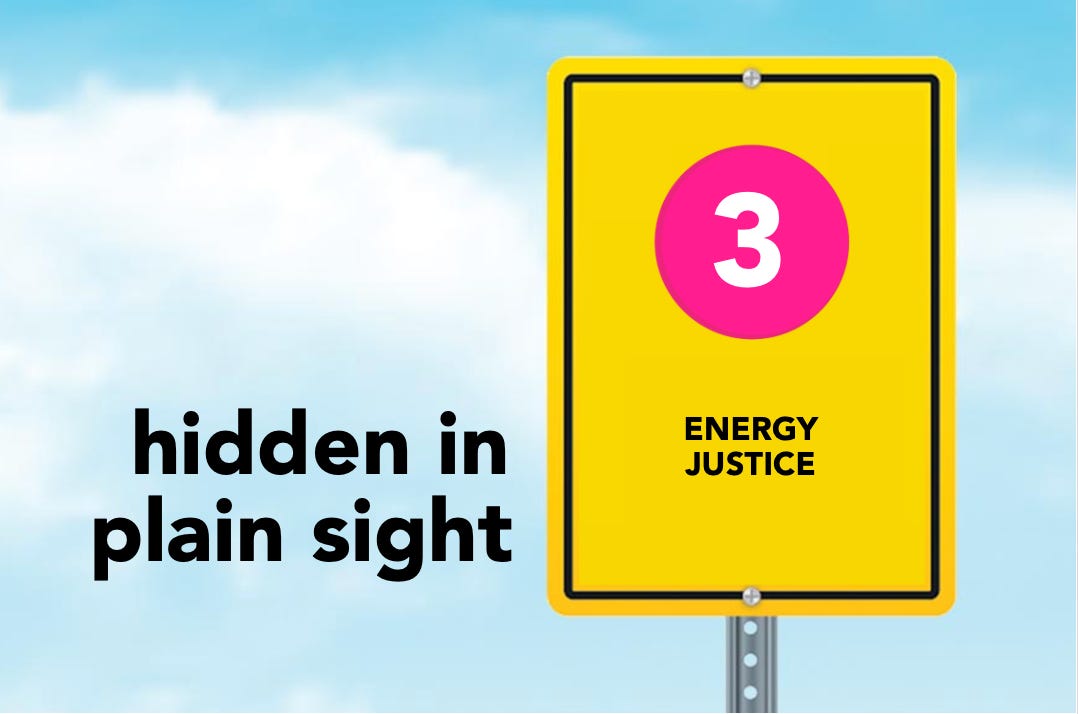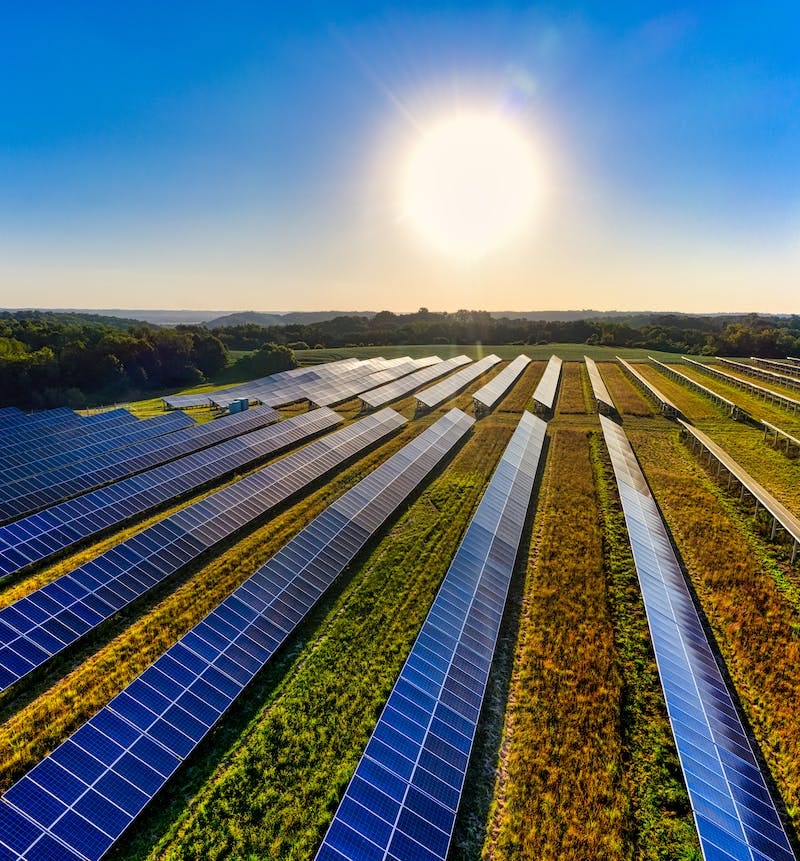#3 energy justice
Hidden in Plain Sight: solar waste, carbon currency, intersectional environmentalists
energy justice
A pillar of solarpunk is its drive to reorient our imagination away from the extractive logic that has characterized our fossil fuel-dominated economy and move toward energy justice. Imagine giving everyone their own solar panel, their own energy storage battery and the means to energy-share in a micro-grid. For too long, the climate fight has been limited to scientists and policy experts. While we need their skills, we also need so much more. What we desperately need is more community will.
solarizing the world
“If we gave people [solar tech] like we gave them a COVID vaccine, we would have a healthier world," claims Raphael Heffron, Professor in Global Energy Law & Sustainability, University Of Dundee. Spoken like a true solarpunk!
In her aptly titled Atmos article "Solarpunk: Why 2023 Must Be the Year of the Sun," journalist Imogen Malpas deftly weaves the advancements and historical innovations in solartech, while raising the concerns of solar waste (from, for example, unused solar panels and more), and how we might overcome the capitalist control and look to build "communal solar infrastructure democratically, could help ensure true climate justice in future energy systems."
Some solarizing examples set to rise in 2023:
• The world’s first long-range solar electric car—the Lightyear 0—set to convert sunlight into about 43 miles of daily range.
• Gemini solar-and-storage project in the Mojave Desert, with panels stretching across the southeastern tip of Nevada, slated to power Las Vegas during peak energy generation. periods.
Great ideas? Yes, but how do we avoid energy profiteering? Perhaps that’s the next wave of solar. Malpas posits that it’s a wave solarpunks have seen coming—and one that will bring us closer to the cleaner, brighter world we all deserve. There are three elements in the growing body of solarpunk literature that have come to characterize the genre: light, abundance, and transparency. And she claims that "If we can weave these into the roots of solar power generation, we can brighten the world into a sunnier place." We couldn't agree more.
SOURCE: Imogen Malpas, Atmos
carrot over stick: fight carbon with coin!
Solarpunks will embrace a targeted reward for reducing or removing carbon emissions. There will be a realization that we are making life hard for ourselves by relying too heavily on taxes and cap and trade and punitive measures. We need A green financial stimulus that sends a strong market signal for the deep transition of the world economy. The carbon currency is the economic instrument of the Global Carbon Reward (GCR) policy. The main function of the currency is to deliver public and private finance at a scale that can address the ambition of the Paris Climate Agreement— and to do so without imposing any direct costs on citizens, businesses or governments. The carbon currency will be a new type of ‘representative money’ because it will represent carbon that has been mitigated. This is analogous to representing gold in storage under a gold exchange standard.
SOURCE: Global Carbon Reward
climate activism & radical hope
"I’m in love with my future, can’t wait to meet her," goes the chorus of Billie Eilish's single "My Future" from her genre-defying second album, Happier Than Ever. Eilish sings about self-love that lends itself to a broader interpretation—love for her body, and her commitment to mother nature's body, the environment. Eilish pre-recorded a performance of the track with her older brother, Finneas O’Connell, for the Earthshot Prize— an environmental honor, conceived by Prince William and Sir David Attenborough, given annually to five innovators who are working to “repair and regenerate our planet.”
During her 2022 Happier Than Ever world tour, Eilish set up Eco-Villages at her concert venues where fans could fill their water bottles for free, register to vote, and learn about environmental nonprofits, with an emphasis on BIPOC- and women-led organizations.
Eilish is not alone—Vogue shares interviews with eight other young activists whose profound work in climate justice and community is creating a tsunami of radical hope.
SOURCE: Jen Wang, Vogue
intersectional environmentalist: the one to watch
Leah Thomas is the founder of the Intersectional Environmentalist platform. As a self-described “eco-communicator,” Thomas’ work emphasizes environmental justice and the convergence of environmentalism with social justice issues. She coined the term “intersectional environmentalism” in an Instagram post that quickly went viral in May 2020 amidst the widespread BLM protests and calls for racial justice.
In Thomas’ words, intersectional environmentalism is “an inclusive version of environmentalism that advocates for both the protection of people and the planet.” The movement also recognizes the disproportionate effects of climate change on other marginalized groups, including people with disabilities as well as women and gender minorities.
SOURCE: Sophie Capshaw-Mack, Columbia State of the Planet
Thanks for tuning in.
For more wanderings, become an Alice in Futureland subscriber—it's free.
Invite your friends to this mad tea party and let's see how many things we can learn before breakfast.
©2023 Alice in Futureland









